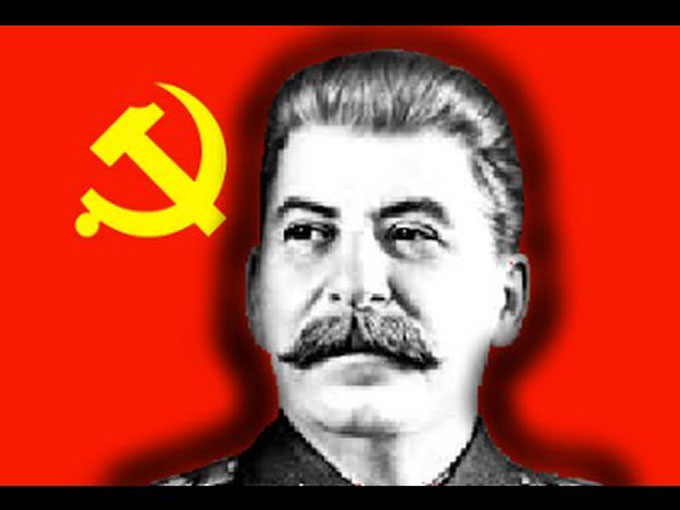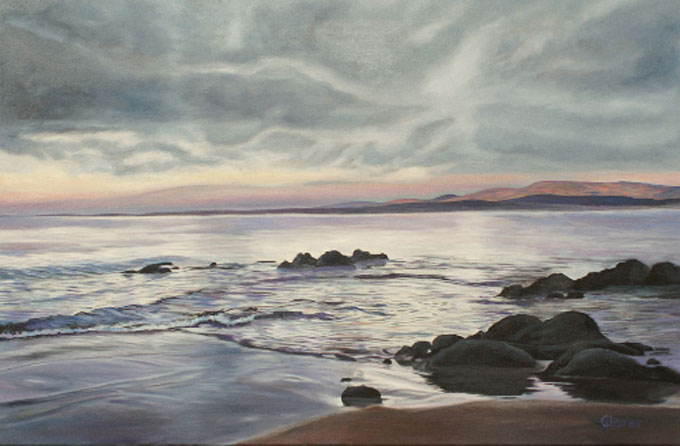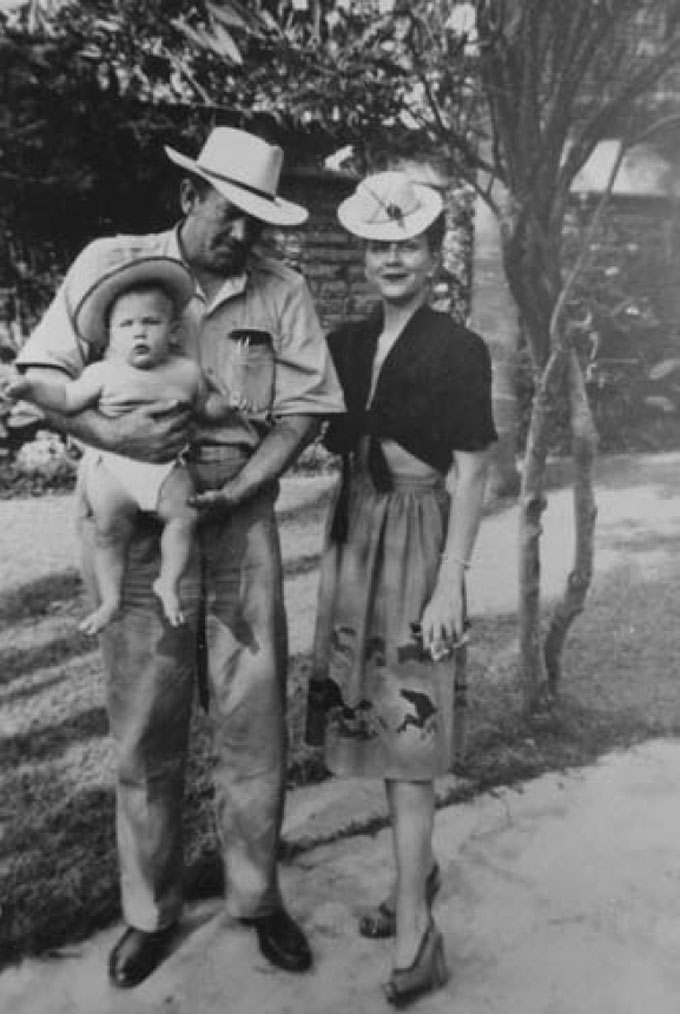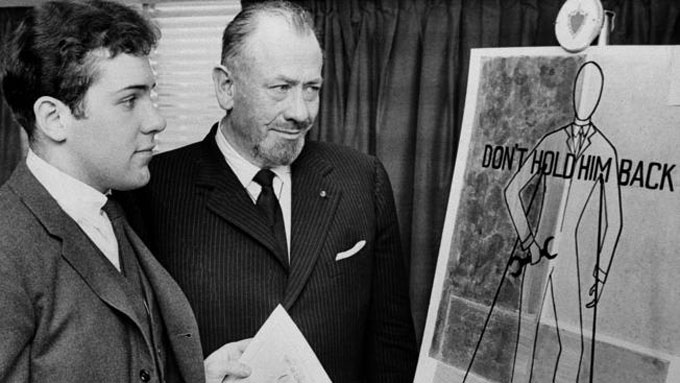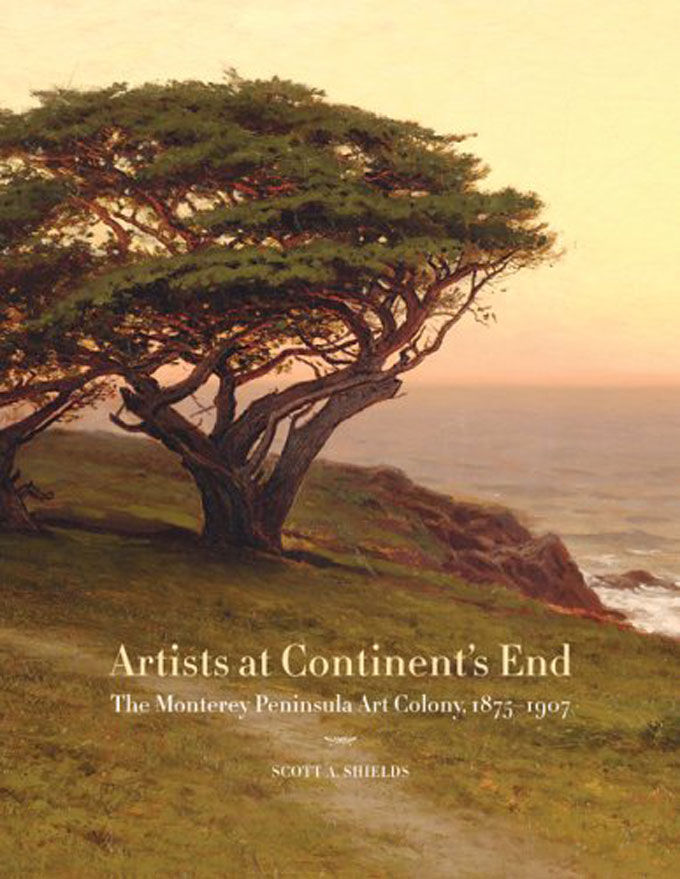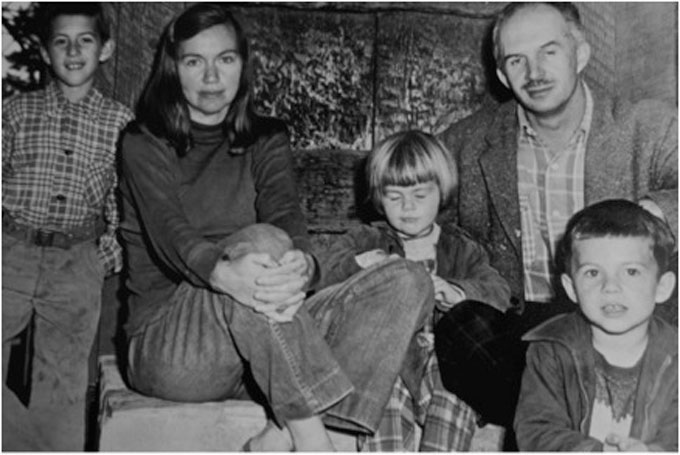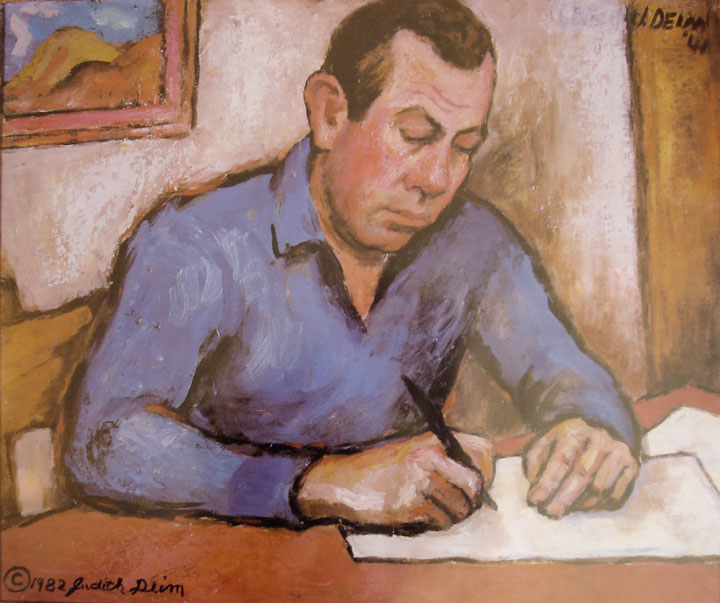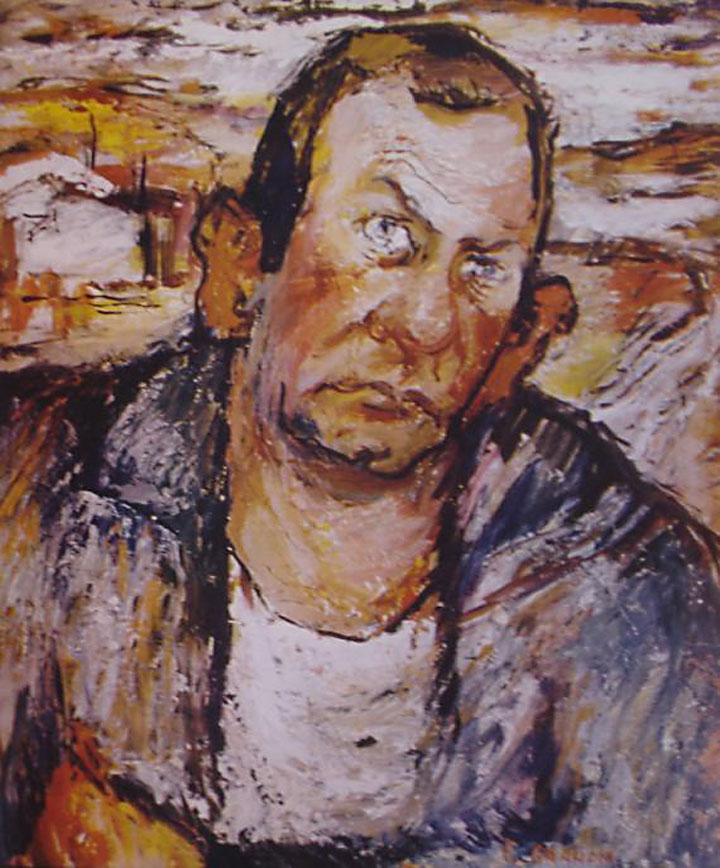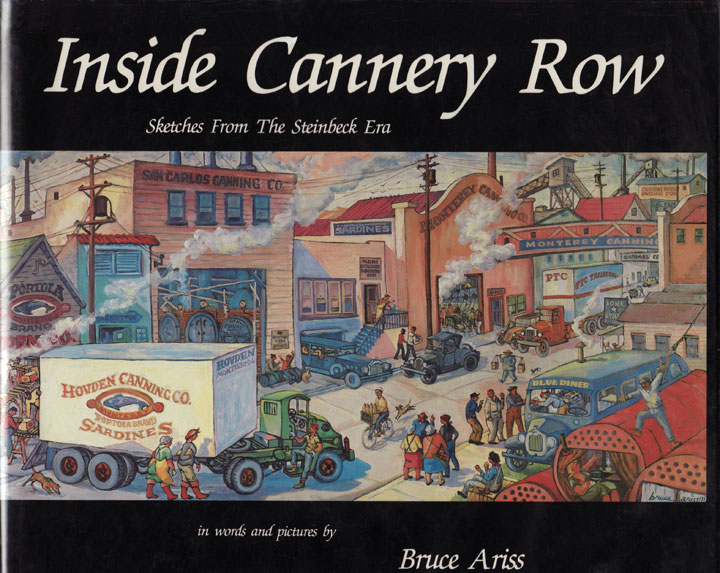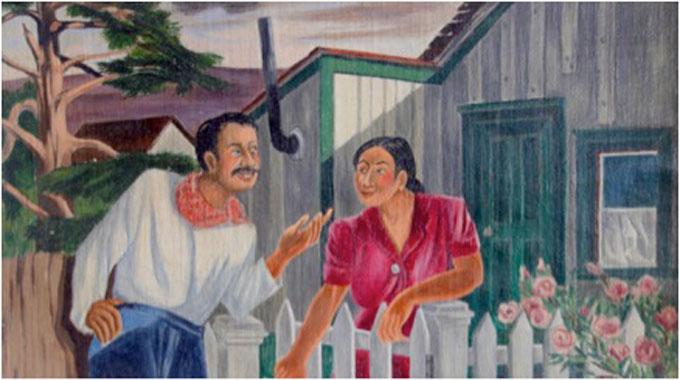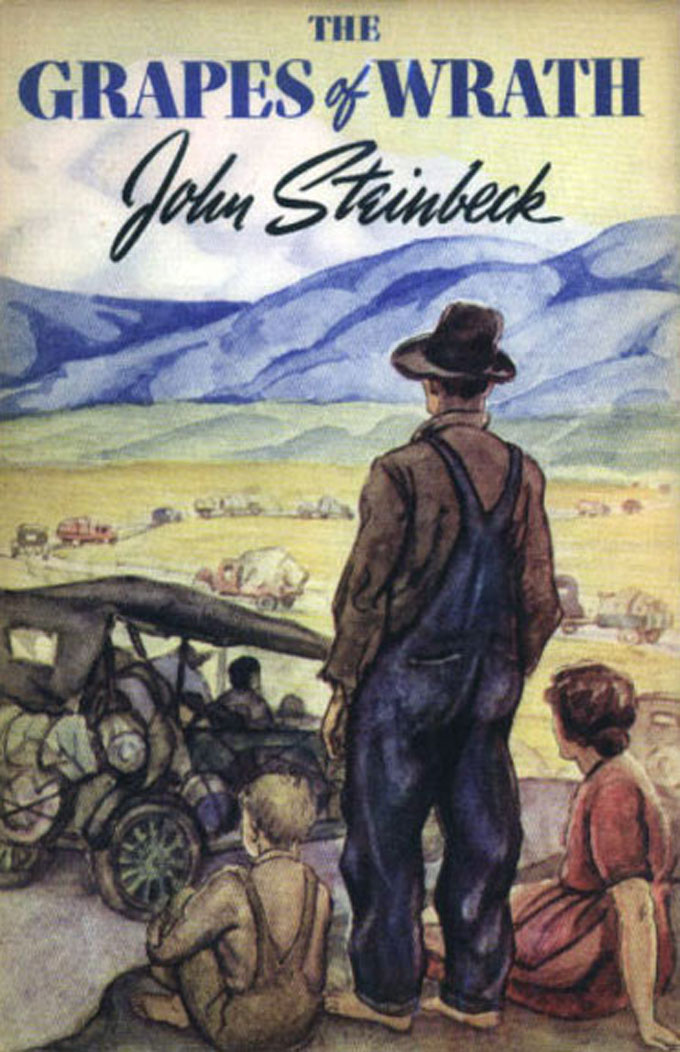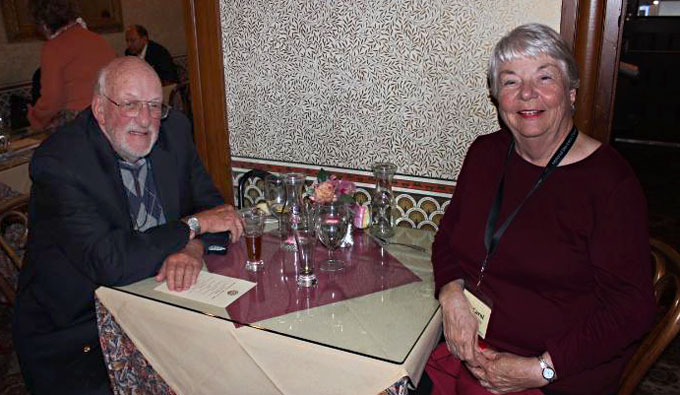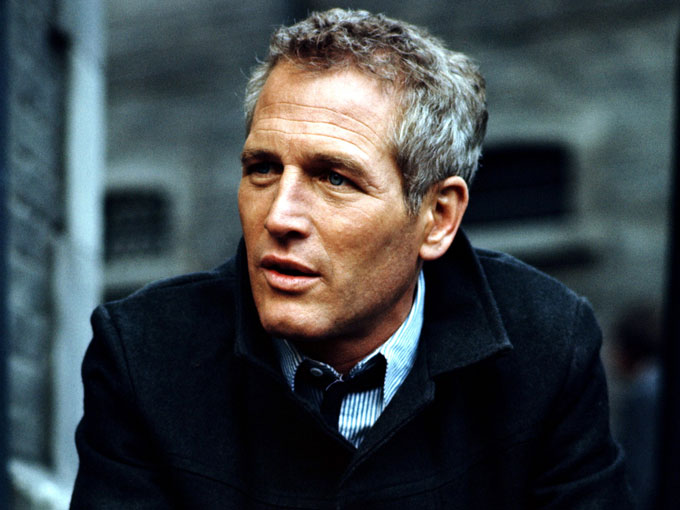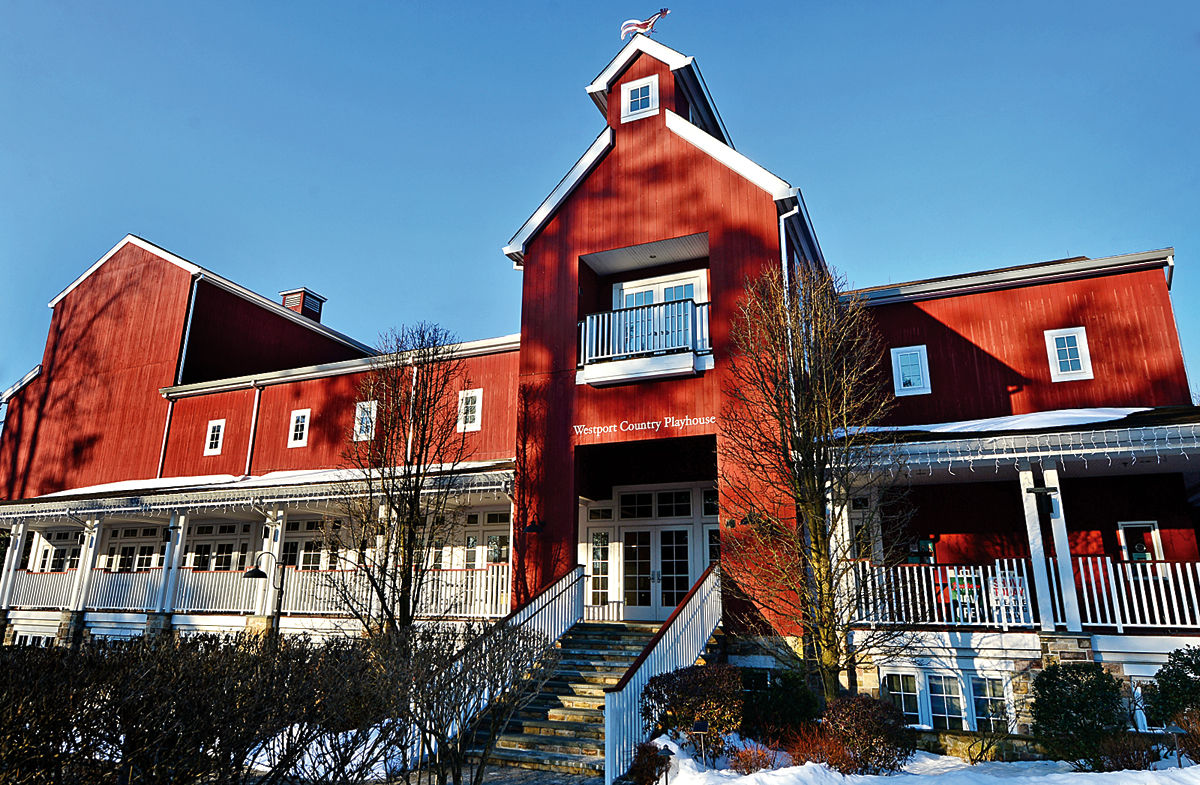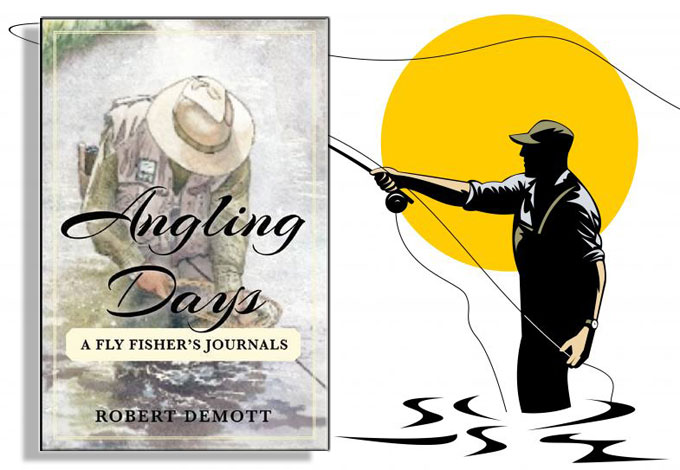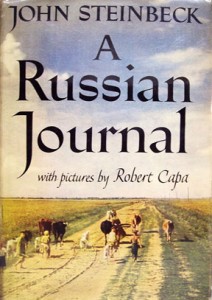 “Revisiting John Steinbeck’s A Russian Journal from 1948”—an impassioned website post dated March 21, 2017—reminds readers that John Steinbeck and Robert Capa overcame opposition from left and right in reporting firsthand on daily life in the Soviet Union under Joseph Stalin following World War II. A publication of the International Committee of the Fourth International, the World Socialist site revives Cold War rhetoric in attacking the forces of fascism, Stalinism, and reactionary capitalism that combined to make the lives of ordinary Russians as miserable as possible before, during, and after the war. The language of the post sounds outdated, but the author’s idea accords with the view of John Steinbeck, whom she credits for accuracy and bravery in the face of threats at home and in Russia. “While the Soviet Union was destroyed more than 25 years ago by the Stalinist bureaucracy,” she writes, “the experiences of the Second World War continue to shape the consciousness of millions in the former USSR. Despite certain limitations, this work by Steinbeck and Capa provides valuable insight into the historical experiences of the working class and peasantry of the former USSR.” Timely praise.
“Revisiting John Steinbeck’s A Russian Journal from 1948”—an impassioned website post dated March 21, 2017—reminds readers that John Steinbeck and Robert Capa overcame opposition from left and right in reporting firsthand on daily life in the Soviet Union under Joseph Stalin following World War II. A publication of the International Committee of the Fourth International, the World Socialist site revives Cold War rhetoric in attacking the forces of fascism, Stalinism, and reactionary capitalism that combined to make the lives of ordinary Russians as miserable as possible before, during, and after the war. The language of the post sounds outdated, but the author’s idea accords with the view of John Steinbeck, whom she credits for accuracy and bravery in the face of threats at home and in Russia. “While the Soviet Union was destroyed more than 25 years ago by the Stalinist bureaucracy,” she writes, “the experiences of the Second World War continue to shape the consciousness of millions in the former USSR. Despite certain limitations, this work by Steinbeck and Capa provides valuable insight into the historical experiences of the working class and peasantry of the former USSR.” Timely praise.
Rousing Post Recalls Cold War, Citing John Steinbeck
What I Learned from The Winter of Our Discontent
I’m a small-town high school teacher and newspaper columnist, and every month I pick a new book, usually a literary novel, to read and recommend to my followers, who seem to enjoy what I have to say. Recently I chose The Winter of Our Discontent, and I confess it was because of the title rather than the content. But John Steinbeck’s novel is an apt expression of what I see as the winter of our discontent in the United States today, and it reflects the reality I face every day in my classroom.
When I chose The Winter of Our Discontent, I confess it was because of the title rather than the content.
As John Steinbeck fans know, The Winter of Our Discontent tells the story of a simple grocery store clerk, an outwardly respectable man named Ethan Allen Hawley, and his moral descent into corruption and crime. Steinbeck’s moral tale gave me plenty of “ah-hah” and “why, yes” moments—the kind of experience one expects from excellent literature, and the reason I recommended it in my column. As Steinbeck notes in the novel, “A man who tells secrets or stories must think of who is hearing or reading, for a story has as many versions as it has readers. Everyone takes what he wants or can from it and thus changes it to his measure. Some pick out parts and reject the rest, some strain the story through their mesh of prejudice, some paint it with their own delight. A story must have some points of contact with the reader to make him feel at home in it. Only then can he accept wonders.”
Steinbeck’s moral tale gave me plenty of ‘ah-hah’ and ‘why, yes’ moments—the kind of experience one expects from excellent literature, and the reason I recommended it in my column.
Though written years before the invention of the internet and social media, Steinbeck’s cautionary words are well-suited to our digitally-driven era. At this point in Steinbeck’s narrative, Ethan is thinking about how he has to shape his stories, or lies, to fit his hearers, and about a king in another story who told his secrets down a well because “It only receives, and the echo it gives back is quiet and soon over.” If only that were true today. For every tweet sent, there is usually a careless reader who misunderstands, misinterprets, or misappropriates the sender’s message, creating a backlash that becomes a raging beast that takes on a life of its own.
For every tweet sent, there is usually a careless reader who misunderstands, misinterprets, or misappropriates the sender’s message.
I don’t spend much time reading the comments people leave below online news stories or Facebook posts, but when I do I’m amazed at how far they wander from the point of the story or post. As Steinbeck knew, we take things out of context and add our own prejudices when we read or listen, and while I enjoy friendly banter as much as he did, I’m tired of the nastiness to which people increasingly resort when they don’t understand or approve of someone else’s point. I’m especially disgruntled when negative comments come from leaders who ought to know better and set an example for others.
As Steinbeck knew, we take things out of context and add our own prejudices when we read or listen.
As a school teacher, I recognized the truth in John Steinbeck’s unflattering portrayal of Ethan’s teenage children, particularly Ethan’s son Allen, and this line from the novel really made me laugh: “Three things will never be believed–the true, the probable, and the logical.” Often my students don’t believe me when I tell them something that is demonstrably true, then give instant credence to the next rumor they hear or read online, repeating it as if it were gospel truth. Fewer and fewer adults seem capable of logical thinking, so I probably shouldn’t be surprised. If you’re a teenager who isn’t capable of sound reasoning, you’re unlikely to believe someone who uses it. Like their parents, too many adolescents today are prepared to accept negative surface propaganda while doubting deeper truths.
Like their parents, too many adolescents today are prepared to accept negative surface propaganda while doubting deeper truths.
Is this because people want to take the easy way out of every problem, as Steinbeck suggests in The Winter of Our Discontent? Ethan is appalled when he learns that the patriotic essay for which Allen has won a cash award has been plagiarized. But Ethan’s reaction is hypocritical, because by this point in the story he has stooped pretty low himself. Unlike his father however, Allen shows no remorse, defending his behavior in much the same way my students defend their reliance on the internet so that they don’t have to do any thinking for themselves. Instead, when Allen’s plagiarism is exposed he gets mad at the person who ratted on him and utters the rallying cry of all cheaters and thieves: “‘Who cares? Everybody does it.’” Like John Steinbeck, I care, and I care very much. I’m weary of calling out cheaters like Allen in my classroom. Like Ethan in the novel, I sometimes think about throwing in the towel and calling it quits.
I’m weary of calling out cheaters like Allen in my classroom. Like Ethan in the novel, I sometimes think about throwing in the towel and calling it quits.
Ethan has had his own “Who cares?” moments growing up, but he had the advantage of a perfect teacher in his Aunt Deborah, a character I liked because I love words, grammar, literature, and everything associated with language, just as she does. When Ethan comes across the word talisman and asks her what it means, she tells him to look it up. As a result, he recalls, “So many words are mine because Aunt Deborah first aroused my curiosity and then forced me to satisfy it by my own effort. . . . She cared deeply about words and she hated their misuse as she would hate the clumsy handling of any fine thing.” When he finds the definition of talisman he discovers new words that he is forced to look up, too. “It was always that way,” he says. “One word set off others like a string of firecrackers.”
Aunt Deborah is a character I liked because I love words, grammar, literature, and everything associated with language, just as she does.
I highlighted the passage in the novel because I love the simile, and I love the way Steinbeck manages to incorporate his passion for words into an otherwise depressing story. Now, more than ever, we need Aunt Deborahs in our lives to make us aware of the beauty and magic of words at an early age. No doubt this idea impressed me because of the prejudices I bring with me to when I read John Steinbeck: others might roll their eyes because they don’t share my experience. Steinbeck fully understood the limitation we bring to our reading, and he wrote The Winter of Our Discontent in part, I believe, to help readers participate in the remedy he offers. Much has changed since The Winter of Our Discontent was written, but the deep truths to be discovered in Ethan’s story apply today. The winter of our discontent in the United States will end eventually, I hope sooner rather than later , but The Winter of Our Discontent by John Steinbeck will always have lessons for us—if we have ears to listen and love words enough to understand.
The Hour of the Pearl: John Steinbeck’s America and the Election of Donald Trump
Donald Trump’s upcoming presidential inauguration is seen by many as ushering in a bizarre and unprecedented era, not only for Americans, but also for citizens of other countries. Yet, like similar ceremonies elsewhere, the presidential inauguration is merely a point on a timeline that began decades ago and culminated in the 2016 election. Because the trend is longstanding and disturbing, the outcome at hand threatens to take the course of history in a dangerous direction. Indeed, it might be said that deep beliefs of the American people, and profound principles of American democracy, are at the heart of an evolutionary process which, perhaps inevitably, produced the society reflected in the 2016 election.
For me, chief among the past thinkers who foresaw this most clearly is John Steinbeck, the writer who has most inspired my thinking and my art. For four decades he wrote of his love for America and his hatred of what his countrymen were doing to their country. Though the 2016 election might have been worse, past political campaigns have had their share of ugliness, as Steinbeck wrote in America and Americans, the last book he wrote. In it Steinbeck described the scars left by elections which he observed closely as a citizen, and in which he frequently participated by giving advice and drafting speeches on behalf of Democratic candidates for president. I would like to quote passages from Steinbeck’s writing, starting with America and Americans, to help readers of all cultures and all ages today comprehend Steinbeck’s moral genius in the context of the 2016 election and the upcoming presidential inauguration.
Once the nominations are completed, the campaigns for election begin—hurtful, libelous, nasty, murderous affairs wherein motives are muddied, names and reputations beshitten, families tarred and tawdried, friends and associates mocked, charged and clobbered. . . . In fact, the rules of nonsense are suspended during a Presidential election, as well as memories of honesty and codes of decency. (America and Americans, 1966)
While campaigning in 2015-16, Trump not only bragged about his repeated abuse of women, he also took advantage of campaign speeches to mock and blame women, as stupid men always have, for the infidelities of their men. How any woman could have voted for so misogynistic a man is beyond all reason. But this is only one example of his breathtaking disregard for the necessity and sanctity of societal rules. While insisting on law and order for others, he repeatedly flouted fundamental rules of engagement in past election discourse. In ignoring the traditional imperative of constructive and respectful debate—ridiculing the infirm, insulting opponents, disdaining other races and religions—he highlighted the very worst characteristic of the human species: cruelty.
It is the race, the species that must go staggering on . . . our ugly little species, weak and ugly, torn with insanities, violent and quarrelsome, sensing evil—the only species that knows evil and practices it—the only one that senses cleanliness and is dirty, that knows cruelty and is unbearably cruel. (Burning Bright, 1950)
Over the millennia most of us have learned to obey the rules or suffer punishment for breaking them. But most important, even the rule-breaker knew he was wrong and the others right; the rules were understood and accepted by everyone. . . . Could this be our difficulty, that gradually we are losing our ability to tell the difference? The rules fall away in chunks and in the vacant place we have a generality: ‘It’s alright because everybody does it.’ (America and Americans)
It is a rare morning when our newspapers do not report bribery, malfeasance, and many other forms of cheating on the part of public officials who have used the authority vested in their positions for personal gain. Of course we don’t hear of the honest men, but the danger lies not in the miscreants but in our attitude toward them. Increasingly we lose our feeling of wrong. (America and Americans)
It is probable that here is where morals–integrity, ethics, even charity–have gone. The rules allowed us to survive, to live together and to increase. But if our will to survive is weakened, if our love of life and our memories of a gallant past and faith in a shining future are removed–what need is there for morals or for rules? Even they become a danger. (America and Americans)
In promoting his violent version of authoritarian populism, Donald Trump used outrageous lies, frequently disproved, to foster fear and anger in the American electorate. For example, last August he accused President Obama and Hillary Clinton of “founding” the Islamic State, the same method used by McCarthy to smear citizens and officials he accused of aiding Russia.
. . . as Joseph McCarthy proved, the more ridiculous the charge, the less possibility there is of defense. (America and Americans)
Now for many years we have suckled on fear and fear alone, and there is no good product of fear. Its children are cruelty and deceit and suspicion germinating in our darkness. And just as surely as we are poisoning the air . . . so we are poisoned in our souls by fear, faceless, stupid, sarcomic terror. (Once There Was a War, 1958)
The job insecurity and looming poverty that threatens many Americans has placed real fear in their hearts. Trump succeeded by exploiting this unrest, as well as claims about “illegal immigrants” that are as effective today as they were when Steinbeck used them to plot The Winter of Our Discontent.
Men don’t get knocked out. . . . What kills them is erosion; they get nudged into failure. They get slowly scared . . . It rots your guts. . . . I can’t think beyond next month’s payment on the refrigerator . . . I hate my job and I’m scared I’ll lose it. . . . But I know when you’re sick you need medicine or maybe an operation or maybe a shock. Our people were daring men. You know it. They didn’t let themselves get nibbled to death. And now times are changing. There are opportunities our ancestors never dreamed of. And they’re being picked up by foreigners. Foreigners are taking us over. Wake up . . . . (The Winter of Our Discontent, 1961)
And those who believe that these elements of the 2016 election were without precedent, or are likely to go away soon, are kidding themselves.
Ideas are not dangerous unless they find seeding place in some earth more profound than the mind . . . .they are ineffective without the black earth of discontent to grow in . . . . In each case, the idea is dangerous only when planted in unease and disquietude. But being so planted, growing in such earth, it ceases to be an idea and becomes an emotion. . . . (Sea of Cortez, 1941)
Meanwhile, Donald Trump claimed he was “smart” for avoiding paying taxes without admitting that he did.
If a man has money, he doesn’t ask, ‘Can I afford this?’ but, ‘Can I deduct it?’ Two men fight over a luncheon bill when both of them are going to deduct it anyway—a whole nation conditioned to dishonesty by its laws, because honesty is penalized. (Sweet Thursday, 1954)
There are, I am told, rich men who are willing to be dishonest. I believe I am safe in saying there are none who are willing to admit they are fools. (The Short Reign of Pippin IV, 1957)
We know about our tycoons only when they are giving something away, and their gifts and foundations are usually a means of keeping their money out of the hands of the tax collector. (America and Americans)
Trump also promised to reverse some of America’s most progressive legislation and to “drain the swamp” in Washington, blaming media, political opponents, and intellectual elites for the unrest and suspicion about government that he exploited more effectively than other candidates.
. . . we seem to be in a state of turmoil all the time, both physically and mentally. We are able to believe that our government is weak, stupid, overbearing, dishonest, and inefficient, and at the same time we are deeply convinced that it is the best government in the world, and we would like to impose it on everyone else. (America and Americans)
We shout that we are a nation of laws, not men—and then we proceed to break every law we can if we can get away with it. (America and Americans)
Continuing his assault on progressive government, Trump used anxiety and anger about Islamic terrorism to churn up fear and marginalize Muslims, forgetting one of the most fundamental aspects of America’s success—tolerance, acceptance, and the willingness to help others.
Americans are remarkably kind and hospitable and open with both guests and strangers; and yet they will make a wide circle around the man dying on the pavement. Fortunes are spent getting cats out of trees and dogs out of sewer pipes; but a girl screaming for help in the street draws only slammed doors, closed windows, and silence. (America and Americans)
Trump’s repeated vow as a candidate to name conservatives to the Supreme Court far enough right to satisfy religious fundamentalists is a violation of a core principle guaranteed by the U.S. constitution: the separation of church and state.
We constantly rediscover the excellence of the architecture of our government. It has been proof not only against foreign attack but against our own stupidities, which are sometimes more dangerous. (America and Americans)
The narcissism of Trump’s claim that only he can fix things is clinical in nature, and will prevent him from doing what doesn’t benefit him personally. E pluribus unum: does he know what America’s founding motto means?
The President must be greater than anyone else, but not better than anyone else. (America and Americans)
In the past, unless a president acted illegally, Americans respected both the office and the office holder. This civility has been shredded.
We give the President more work than a man can do, more responsibility than a man should take, more pressure than a man can bear. We abuse him often and rarely praise him. We wear him out, use him up, eat him up. And with all this, Americans have a love for the President that goes beyond loyalty or party nationality; he is ours, and we exercise the right to destroy him. (America and Americans)
But it isn’t enough for those who oppose Donald Trump to blame those who supported him. Americans, all of them, must recognize their own contribution to, and accept responsibility for, the situation in which they find themselves.
In the present climate of whining self-pity, of practiced sickness, of professional goldbricking, of screaming charges about whose fault it is, one hears of very few who do their own time, who take their rap and don’t spread it around. It is as though the quality of responsibility has atrophied. (America and Americans)
Unfortunately, a sense of entitlement to leisure and luxury at impossibly low cost has led to an obese, lazy, solipsistic, violent, substance-dependent population in some sectors of the United States. Blaming foreigners for illegal drugs, to take one example, is unacceptable. If there were no market, there would be no importation.
I strongly suspect that our moral and spiritual disintegration grows out of our lack of experience with plenty. Once, in a novel, I wrote about a woman who said she didn’t want a lot of money. She just wanted enough. To which her husband replied that just enough doesn’t exist. There is no money or not enough money. A billionaire still hasn’t enough money. . . . Having many things seems to create a desire for more things, more clothes, houses, automobiles . . . . We are trapped and entangled in things. (America and Americans)
As a Canadian who has lived in the USA and benefited from its largess, it pains me deeply to witness this insanity. But the truth is that for too long America has touted success without admitting failure—and ignored the existence or validity of cultures in other countries, including Canada.
We in the United States . . . should be taken as a horrible example and our methods avoided by any government and people enlightened enough . . . . (Sea of Cortez)
As a scientist, I’m particularly concerned about a president-elect who ignores science when convenient and who makes frequent unfounded assertions based on hearsay rather than provable fact.
. . . the most dangerous tendency in the world is the desire to believe a rumor rather than to pin down a fact. (A Russian Journal, 1948)
Perhaps the most serious example of this ignorance is Trump’s denial of global warming, which he appeared to take back slightly after being elected. Unfortunately his cabinet appointments confirm the inconvenient truth that, for purposes of governing, he doesn’t believe the climate is really changing—or if it is, that human waste and carbon-dependency is a contributing factor than can or should be checked.
With our own resources we have been prodigal, and our country will not soon lose the scars of our grasping stupidity. (Sea of Cortez)
[The] tendency toward irresponsibility persists in very many of us today; our rivers are poisoned by reckless dumping of sewage and toxic industrial wastes, the air of our cities is filthy and dangerous to breathe from the belching of uncontrolled products from combustion of coal, coke, oil, and gasoline. Our towns are girdled with wreckage and the debris of our toys—our automobiles and our packaged pleasures. Through uninhibited spraying against one enemy we have destroyed the natural balances our survival requires. All these evils can and must be overcome if America and Americans are to survive; but many of us still conduct ourselves as our ancestors did, stealing from the future for our clear and present profit. (America and Americans)
Above all, Donald Trump is a bully’s bully. His blatantly hyperbolic claims during the campaign callously played on the economic fears of Americans while exploiting their pain for his gain. His campaign rhetoric and behavior since winning have made me fearful, too. As a foreigner, I now fear that by setting foot in America I will be subject to the kind of disrespect and violence sanctioned, for the first time in my memory, by the highest office in the land.
Until I have evidence that this fear is unwarranted—and for as long as Donald Trump is president—I have decided not to re-enter the United States. I regret this because I have close friends and family members in America I will miss seeing. But when Americans say they want to be “great again” it sounds to me as if they will only be comfortable when they are once again the dominant “winners” of the world. It reminds me of the bully who tweets almost daily that those who disagree with him are “losers.” Such disrespect makes me feel unwelcome and unsafe in Donald Trump’s America.
When I joined the Advisory Board of the Center for Steinbeck Studies at San Jose State University two years ago, I hoped my work as a Canadian artist, scientist, and humanist would offer a helpful perspective and foster the values espoused by John Steinbeck in his life and writing. As a result of the 2016 election, however, I now fear that America will drift even farther from Steinbeck’s hopeful daylight into the darkness of anger, cynicism, and crude mockery embodied by the president-elect.
I briefly considered resigning my duties on the Steinbeck center’s board; but because I’m an optimist, like Steinbeck, I have decided to stay. I am confident that the pall over America will lift eventually, as day follows night. Meanwhile, technology makes it possible for me to participate in meetings, and Steinbeck’s delicate metaphor of the “hour of the pearl” reminds us that the transition from darkness back to light is a fundamental truth of science, art, and the arc toward justice of human history.
Early morning is a time of magic in Cannery row. In the gray time after the light has come and before the sun has risen, the Row seems to hang suspended out of time in a silvery light. The street lights go out, and the weeds are a brilliant green. The corrugated iron of the canneries glows with the pearly lucence of platinum or old pewter. . . . It is a time of great peace, a deserted time, a little era of rest . . . the air is cool and fresh. . . . Very few people are about, just enough to make it seem more deserted than it is. . . . the hour of the Pearl—the interval between day and night when time stops and examines itself. (Cannery Row, 1945)
Today, on the eve of Donald Trump’s presidential inauguration, I urge self-examination on others, and the resolution to forsake all that Steinbeck felt was the worse in us.
I have named the destroyers of nations: comfort, plenty, and security—out of which grow a bored and slothful cynicism, in which rebellion against the world as it is or myself as I am are submerged in listless self-satisfaction. (America and Americans)
On behalf of SteinbeckNow.com, to which I will continue to contribute, I also urge readers of this post to respond by commenting, or by sharing their thoughts in a guest-author post of their own. Whether or not you agree with my decision to stay away from America until the madness passes, engagement with American values and principles embraced by Steinbeck during his lifetime is to participate in the books he wrote in the way he wanted: actively, with empathy, imagination, and faith that the Hour of the Pearl will come again to our world.
The Hour of the Pearl, oil on canvas by Ron Clavier.
The Winter of Our Discontent Deepens as Trumpettes Party
It’s doubtful either Donald Trump or the minority of Americans who just elected him ever read The Winter of Our Discontent, John Steinbeck’s prophetic fiction about public and private corruption in America 60 years ago. But for fans of the novel the parallels with our winter of discontent today are troubling. Cheating and self-dealing, inequality and incivility, anti-immigrant hatred and hysteria—is the USA less or more selfish today than it was when Steinbeck wrote his cautionary tale? For Donald Trump and his fans among America’s fraction-of-one-percent, personal profit is the golden rule and goodness can measured in tax cuts and capital gains. Add one word to the line from Richard III quoted in Steinbeck’s title—“Now is the winter of our discontent/Made glorious summer by this sun of New York”—and Shakespeare’s metaphor for an English tyrant’s mood aptly expresses the ardor felt by the Trumpettes of Mar-a-Lago, the palatial club in Palm Beach where Trump now holds winter court. I don’t know if John Steinbeck visited Mar-a-Lago. or encountered Donald Trump before he died, but I’ve had the pleasure of both and I’m pretty sure Steinbeck would take a very dim view.
John Steinbeck’s View of Donald Trump and Mar-a-Lago?
Before I moved to California and discovered Steinbeck Country I lived in West Palm Beach, where I ran a prominent nonprofit and played the organ at St. Edward’s Catholic Church, “the Kennedy church,” in Palm Beach. Once I substituted at Bethesda-by-the Sea, the Episcopal church where Trump reportedly received applause from attendees on Christmas Eve. I knew Ralph Wolfe Cowan, the artist who painted the Dorian Gray-like portrait of Trump shown in the lead photo of this post. My home in West Palm Beach wasn’t far from the bridge connecting with Palm Beach near Mar-a-Lago, Donald Trump’s spacious domain, so named because it stretches from Lake Worth to the Atlantic. I passed by often on my way to church, and I was a luncheon and gala guest on those occasions when doing my job entailed hobnobbing.
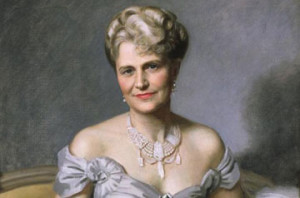 It’s even possible I toured Mar-a-Lago before Donald Trump, who bought it at a discount from descendants of Post cereal heiress Marjorie Merriweather Post in 1985. A year or so earlier a friend of mine arranged for a private look-see at the estate where Post entertained lavishly when John Steinbeck was alive. By the 1980s the mansion’s faded interior resembled Norma Desmond’s living room in Sunset Boulevard—aging, abandoned, populated by the ghosts of parties and partners past—and John Kennedy was the only ex-president with a known Palm Beach address. To fill this gap, Post willed Mar-a-Lago to the government as a presidential retreat when she died. But the property lies under the flight path of Palm Beach airport, adding to security issues, and before Trump came along the Palm Beach social scene had attracted few of Kennedy’s successors. Johnson wasn’t the Palm Beach type, Nixon and Ford and Reagan enjoyed Walter Annenberg’s hospitality in Palm Springs, and the George H.W. Bushes had close ties to the old money on Jupiter Island, a less pretentious winter enclave an hour north of Palm Beach.
It’s even possible I toured Mar-a-Lago before Donald Trump, who bought it at a discount from descendants of Post cereal heiress Marjorie Merriweather Post in 1985. A year or so earlier a friend of mine arranged for a private look-see at the estate where Post entertained lavishly when John Steinbeck was alive. By the 1980s the mansion’s faded interior resembled Norma Desmond’s living room in Sunset Boulevard—aging, abandoned, populated by the ghosts of parties and partners past—and John Kennedy was the only ex-president with a known Palm Beach address. To fill this gap, Post willed Mar-a-Lago to the government as a presidential retreat when she died. But the property lies under the flight path of Palm Beach airport, adding to security issues, and before Trump came along the Palm Beach social scene had attracted few of Kennedy’s successors. Johnson wasn’t the Palm Beach type, Nixon and Ford and Reagan enjoyed Walter Annenberg’s hospitality in Palm Springs, and the George H.W. Bushes had close ties to the old money on Jupiter Island, a less pretentious winter enclave an hour north of Palm Beach.
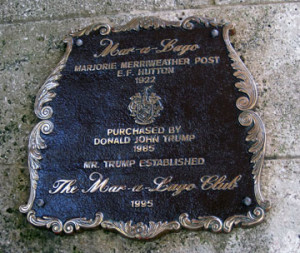 Palm Beach prejudice presented another problem. Kennedy wasn’t welcome everywhere, even as president, and top-tier social clubs like the one across the road from Mar-a-Lago excluded Catholics and Jews from membership as recently as my time. To his credit, Donald Trump thumbed his nose at this tradition when he opened Mar-a-Lago Club for those with sufficient cash and cachet, regardless of race or religion, in 1995. As a marketing strategy his open-door policy was a winner, attracting socialites and business leaders and making Mar-a-Lago a popular venue for black-tie charity events. Trump’s inauguration committee may be having trouble signing talent, but name entertainers like Vic Damone loved playing Mar-a-Lago, and the evening I spent chatting with Diahann Carroll, Vic’s wife at the time, is my warmest memory of the place. Vanity Fair covered Mar-a-Lago favorably almost from the start, though the tone changed after the editor of the magazine described Trump as a “short-fingered vulgarian.” (“How Donald Trump Beat Palm Society and Won the Fight for Mar-a-Lago“ was a source of images for this post.)
Palm Beach prejudice presented another problem. Kennedy wasn’t welcome everywhere, even as president, and top-tier social clubs like the one across the road from Mar-a-Lago excluded Catholics and Jews from membership as recently as my time. To his credit, Donald Trump thumbed his nose at this tradition when he opened Mar-a-Lago Club for those with sufficient cash and cachet, regardless of race or religion, in 1995. As a marketing strategy his open-door policy was a winner, attracting socialites and business leaders and making Mar-a-Lago a popular venue for black-tie charity events. Trump’s inauguration committee may be having trouble signing talent, but name entertainers like Vic Damone loved playing Mar-a-Lago, and the evening I spent chatting with Diahann Carroll, Vic’s wife at the time, is my warmest memory of the place. Vanity Fair covered Mar-a-Lago favorably almost from the start, though the tone changed after the editor of the magazine described Trump as a “short-fingered vulgarian.” (“How Donald Trump Beat Palm Society and Won the Fight for Mar-a-Lago“ was a source of images for this post.)
 In 2003 my organization was celebrating its 25th anniversary when the publisher and a retinue from Vanity Fair flew to town in preparation for an expose of Palm Beach social mores. One of the writers in the group—the late Christopher Hitchens, a regular contributor to Vanity Fair—invited me to tag along when a Republican billionaire with a household name hosted dinner at a Palm Beach club that still banned Jews. Rather late in life Hitchens had learned that his maternal grandmother was Jewish, a topic of conversation as we waited outside the club, so I suggested that he ask for a kosher menu once we were inside and seated for dinner. The next day I got a call from the head of the Palm Beach cultural venue where my organization’s anniversary event was about to be held. It happened that his board chairman was an officer of the club—a thin-skinned millionaire who learned, almost instantly, about our quiet indiscretion the night before. I wrote the requisite letter of apology and agreed to keep my mouth shut about the incident, but Christopher seemed gratified when I reported the result to him. He said it proved our point perfectly.
In 2003 my organization was celebrating its 25th anniversary when the publisher and a retinue from Vanity Fair flew to town in preparation for an expose of Palm Beach social mores. One of the writers in the group—the late Christopher Hitchens, a regular contributor to Vanity Fair—invited me to tag along when a Republican billionaire with a household name hosted dinner at a Palm Beach club that still banned Jews. Rather late in life Hitchens had learned that his maternal grandmother was Jewish, a topic of conversation as we waited outside the club, so I suggested that he ask for a kosher menu once we were inside and seated for dinner. The next day I got a call from the head of the Palm Beach cultural venue where my organization’s anniversary event was about to be held. It happened that his board chairman was an officer of the club—a thin-skinned millionaire who learned, almost instantly, about our quiet indiscretion the night before. I wrote the requisite letter of apology and agreed to keep my mouth shut about the incident, but Christopher seemed gratified when I reported the result to him. He said it proved our point perfectly.
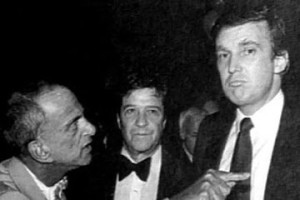 Like John Steinbeck, a writer he admired, Christopher Hitchens was politically astute, egalitarian, and courageous under fire from bullies, Left or Right. Like Steinbeck, he supported America’s pursuit of an unpopular war (in Hitchens’s case, Iraq; in Steinbeck’s, Vietnam) and bravely paid the price. Like Steinbeck, he distrusted power, disliked braggadocio, and detested xenophobia, insult, and incitement to mob violence of the kind seen more than once during Donald Trump’s campaign for president. Roy Cohn, the McCarthy-era lawyer who taught Trump how to play New York hardball, was anathema to Hitchens, as he’d been to Steinbeck when The Winter of Our Discontent was written. The odious combination of compulsive mendacity, obsessive opportunism, and pathological aggression that repelled Steinbeck advanced Cohn’s career and attracted clients. One of them was Donald Trump, the billionaire developer described by Hitchens in 1997 as a “bankrupt real-estate monarch [who] can treat the skyline as his own without any hint of a nasty creditors’ meeting at any of his numerous and lenient banks.” Trump’s Palm Beach ascendancy might have amused Hitchens. But I think it would offend Steinbeck, who ridiculed small-town ambition and conspicuous consumption in The Winter of Our Discontent.
Like John Steinbeck, a writer he admired, Christopher Hitchens was politically astute, egalitarian, and courageous under fire from bullies, Left or Right. Like Steinbeck, he supported America’s pursuit of an unpopular war (in Hitchens’s case, Iraq; in Steinbeck’s, Vietnam) and bravely paid the price. Like Steinbeck, he distrusted power, disliked braggadocio, and detested xenophobia, insult, and incitement to mob violence of the kind seen more than once during Donald Trump’s campaign for president. Roy Cohn, the McCarthy-era lawyer who taught Trump how to play New York hardball, was anathema to Hitchens, as he’d been to Steinbeck when The Winter of Our Discontent was written. The odious combination of compulsive mendacity, obsessive opportunism, and pathological aggression that repelled Steinbeck advanced Cohn’s career and attracted clients. One of them was Donald Trump, the billionaire developer described by Hitchens in 1997 as a “bankrupt real-estate monarch [who] can treat the skyline as his own without any hint of a nasty creditors’ meeting at any of his numerous and lenient banks.” Trump’s Palm Beach ascendancy might have amused Hitchens. But I think it would offend Steinbeck, who ridiculed small-town ambition and conspicuous consumption in The Winter of Our Discontent.
Steinbeck’s California Dreads What Palm Beach Celebrates
 I am unacquainted with the four Trumpettes who posed for Vanity Fair in front of Ralph Cowan’s painting of Donald Trump. But I recognized names from the past when I read reports about holiday festivities at Mar-a-Lago. An outspoken Trumpette quoted by national media outlets once worked for the Democratic county commissioner from West Palm Beach. On New Year’s Day the Palm Beach daily newspaper published an admonishing letter to readers in which she promised that “President-elect Trump will make us financially secure again” and described “the days of massive government waste and corruption” as a thing of the past caused (presumably) by Democrats. Today, more than 30 years after I first met this woman and a decade after leaving Florida for California, I feel about Donald Trump’s Palm Beach as John Steinbeck felt about Salinas, his home town. I’m grateful for the memories but sad for the “dear little town” I used to know. As Mar-a-Lago celebrates and Washington gets ready, the winter of our discontent grows darker by the day here in his home state.
I am unacquainted with the four Trumpettes who posed for Vanity Fair in front of Ralph Cowan’s painting of Donald Trump. But I recognized names from the past when I read reports about holiday festivities at Mar-a-Lago. An outspoken Trumpette quoted by national media outlets once worked for the Democratic county commissioner from West Palm Beach. On New Year’s Day the Palm Beach daily newspaper published an admonishing letter to readers in which she promised that “President-elect Trump will make us financially secure again” and described “the days of massive government waste and corruption” as a thing of the past caused (presumably) by Democrats. Today, more than 30 years after I first met this woman and a decade after leaving Florida for California, I feel about Donald Trump’s Palm Beach as John Steinbeck felt about Salinas, his home town. I’m grateful for the memories but sad for the “dear little town” I used to know. As Mar-a-Lago celebrates and Washington gets ready, the winter of our discontent grows darker by the day here in his home state.
Rare Photos of John Steinbeck Illustrate New Academic Research Articles
Rare photos of John Steinbeck from the collection of the Martha Heasley Cox Center for Steinbeck Studies at San Jose State University—including this 1945 image of Steinbeck with wife Gwyn and son Thom—complement an array of academic research articles by Robert DeMott and others in the Winter 2016 issue of Steinbeck Review. The journal is a publication of Penn State Press and appears twice a year. Barbara A. Heavilin is the editor-in-chief, and Nick Taylor is the executive editor. Photo courtesy Martha Heasley Cox Center for Steinbeck Studies. To subscribe to the journal, visit the Penn State Press site’s Steinbeck Review page.
Passed On: John Steinbeck’s Affinity for the Visual Arts
John Steinbeck not only liked being painted, he liked artists and had a deep affinity for the visual arts. For much of his life he counted artists among his most trusted friends. His appreciation for the visual arts, and the needs of working artists, started on the Monterey Peninsula and continued in New York. As suggested by this undated photograph of Steinbeck with his son Thom, he passed this appreciation on to his children. As a result, of the great American writers of the 20th century perhaps none has been captured in portraits and drawings as often as John Steinbeck.
I think there are two main reasons for Steinbeck’s attraction to artists and being a subject of their work. The place where Steinbeck lived for much of his first 40 years, California’s Monterey Peninsula, was thick with gifted artists when Steinbeck was growing up and beginning his career. And because what Steinbeck was writing in the 1930s and 40s did not make him particularly popular with the local establishment, even endangering him, his circle of friends was necessarily limited, and included artists. This connection with artists carried over when Steinbeck moved to New York and eventually extended to Europe as well. I have a 2001 letter from the late Thomas Steinbeck in which he wrote, “By the time I showed up on the scene, my father had already sat for a number of notable painters.’’ Thom “showed up’’ in New York City, where he was born to John Steinbeck and Gwyndolyn Conger in 1944.
Three major portraits of Steinbeck that we know of were made before he left California for New York. One was by James Fitzgerald. The other two were by the husband-and-wife artists Ellwood Graham and Judith Deim, shown here with their children in an unattributed photograph from the late 1940s or early 1950s.
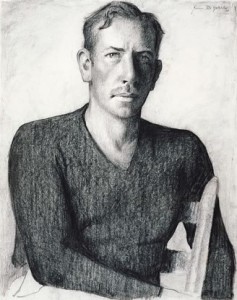 Fitzgerald was born in Milton, Massachusetts and arrived in 1928 as a seaman aboard a freighter. Once he settled in Monterey, he became a part of the group of writers and artists who gathered at Ed Ricketts’s legendary lab on Cannery Row. In 1935, the year Tortilla Flat was published, Fitzgerald did this charcoal study of a young, gaunt Steinbeck, his face half in shadow, that now hangs in the National Portrait Gallery. Reportedly Steinbeck and Fitzgerald had their disagreements, but their friendship endured. There is a photograph of Steinbeck, Fitzgerald, and Ricketts standing on Cannery Row with improvised musical instruments in their hands, including pots and pans. Fitzgerald left Monterey in 1943 for Monhegan Island off the coast of Maine; several years ago the Monhegan Museum established the James Fitzgerald Legacy in honor of his standing as one of America’s greatest watercolorists.
Fitzgerald was born in Milton, Massachusetts and arrived in 1928 as a seaman aboard a freighter. Once he settled in Monterey, he became a part of the group of writers and artists who gathered at Ed Ricketts’s legendary lab on Cannery Row. In 1935, the year Tortilla Flat was published, Fitzgerald did this charcoal study of a young, gaunt Steinbeck, his face half in shadow, that now hangs in the National Portrait Gallery. Reportedly Steinbeck and Fitzgerald had their disagreements, but their friendship endured. There is a photograph of Steinbeck, Fitzgerald, and Ricketts standing on Cannery Row with improvised musical instruments in their hands, including pots and pans. Fitzgerald left Monterey in 1943 for Monhegan Island off the coast of Maine; several years ago the Monhegan Museum established the James Fitzgerald Legacy in honor of his standing as one of America’s greatest watercolorists.
Graham and Deim were both born in St. Louis, Missouri in 1911. Sometime in 1936 or 1937 they met Steinbeck and Ricketts–who were on their way to Mexico–while working on a WPA mural project at the Ventura Post Office in Southern California. The fiction writer and the marine biologist from Pacific Grove were impressed by the work and invited the young couple to visit the Monterey Peninsula, where Deim and Graham eventually settled. Steinbeck was generous, paying their way to Mexico to learn to “paint out loud,’’ advising them, Deim later wrote, to “go to Patzcuaro and not to Tasco where all the tourists go.’’
In 2000 Deim wrote that when Steinbeck and Ricketts returned from their expedition to the Sea of Cortez in 1940 “there was much rejoicing, partying, storytelling at the Lab. After a few days of this . . . John felt it was time to get to work. He said, ‘Why don’t you kids paint my portrait and I shall be forced to concentrate and get on with my book.’” Deim’s modern, compact portrait of Steinbeck in the act of writing, shown here, now hangs at the Martha Heasley Cox Center for Steinbeck Studies in San Jose.
Ellwood Graham’s psychological study of John Steinbeck (above) has been missing for decades. One story says that Steinbeck’s friend, the film director John Huston coveted the painting, another that it was won or lost in a poker game. Its discovery, if it still exists, would be a major find.
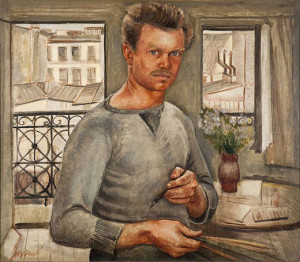 One of the first artists Steinbeck became friendly with in New York was Henry Varnum Poor, shown in this self-portrait. In the early 1940s Poor was, like Steinbeck, a resident of Rockland County, and he agreed to be a character witness for Steinbeck in 1942 when the writer applied for a New York State pistol license. This took some courage because Poor had executed a major mural in the Department of Justice building in Washington, and Steinbeck was controversial.
One of the first artists Steinbeck became friendly with in New York was Henry Varnum Poor, shown in this self-portrait. In the early 1940s Poor was, like Steinbeck, a resident of Rockland County, and he agreed to be a character witness for Steinbeck in 1942 when the writer applied for a New York State pistol license. This took some courage because Poor had executed a major mural in the Department of Justice building in Washington, and Steinbeck was controversial.
In 1944 John and Gwyn commissioned Poor to do a Steinbeck family portrait, with Gwyn holding a crying infant Thomas. It’s a stark painting. Thom, who disparaged his depiction by Poor in the 2001 letter, added that “My mother loved this painting above all others, which only lends credence to Mr. Poor’s interpretive skills.’’ Whatever he thought of Poor’s painting—which now belongs to the National Steinbeck Center in Salinas—John Steinbeck continued the family-portrait habit. Thom, again in his 2001 letter, noted that “before I could tear myself from the ancestral grasp, my portrait had been painted three times.’’
By maintaining his relationship with artists in New York, it’s possible that Steinbeck wanted to help keep them employed, as he had for Graham and Deim back on the Monterey Peninsula. Thom writes about his father’s close friendship in New York with “that singular genius William Ward Beecher.’’ Thom and his brother Johnnie were fascinated by Beecher’s work but were “pole-axed’’ when their father told them Beecher would paint their portrait, which they realized meant lengthy sittings, away from mischief-making. Thom later recalled that when he and John misbehaved their father took out his frustration by “shaking his fist’’ at his sons’ portraits rather than at them.
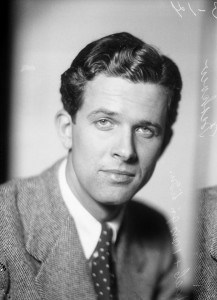 Another Steinbeck portraitist was the handsome Swedish artist Bo Beskow (left), who painted or drew the writer at least three times. Beskow remained a trusted confidant during a three-decade relationship in which the two friends exchanged letters, notes, and encouragement, sometimes under trying circumstances. Beskow’s informal 1946 portrait of a smiling John Steinbeck illustrates the fall 2012 issue of Steinbeck Review. A Beskow drawing of Steinbeck with the notation “Copenhagen, Dec. 8, 1962’’—two days before Steinbeck’s Nobel Prize speech—came to auction several years ago.
Another Steinbeck portraitist was the handsome Swedish artist Bo Beskow (left), who painted or drew the writer at least three times. Beskow remained a trusted confidant during a three-decade relationship in which the two friends exchanged letters, notes, and encouragement, sometimes under trying circumstances. Beskow’s informal 1946 portrait of a smiling John Steinbeck illustrates the fall 2012 issue of Steinbeck Review. A Beskow drawing of Steinbeck with the notation “Copenhagen, Dec. 8, 1962’’—two days before Steinbeck’s Nobel Prize speech—came to auction several years ago.
Of course artists didn’t depict Steinbeck only in portraiture. Judith Deim’s late-1930s painting “Beach Picnic’’ shows Steinbeck, Ricketts, and other members of the lab group gathered on an unidentified Monterey Peninsula or Big Sur beach. Deim said the painting, which has a pensive quality, was done when threats were being made against Steinbeck and his friends gathered around him protectively, as the composition suggests.
Bruce Ariss, another prominent Monterey Peninsula artist from the lab group, did an arresting drawing of Steinbeck sitting under a cypress tree watching as the characters he created parade by on a busy Cannery Row. Ariss’s spontaneous drawings of Steinbeck and Ricketts and the others populate his book Inside Cannery Row: Sketches from the Steinbeck Era. Some of Ariss’s images can be seen today on the colorful banners that dot Cannery Row.
Not all of Steinbeck’s artist friends drew or painted him. Armin Hansen and Howard Everett Smith were leading artists on the Monterey Peninsula with close relationships to Steinbeck, but I know of no portrait of the writer by either one. Hansen wasn’t really a portraitist, so it’s unlikely he painted Steinbeck. Smith did do portraits: perhaps his most famous subject was the poet Robinson Jeffers, after John Steinbeck the Monterey Peninsula’s greatest literary figure.
And then there were the illustrators of Steinbeck’s books. Mahlon Blaine, an artist Steinbeck met in 1925 while traveling to New York for work, created the cover art for Cup of Gold, Steinbeck’s first novel. Steinbeck was unsatisfied with the image, and he continued to be involved in selecting illustrators for many of the works that followed. To create the cover art and illustrations for the deluxe edition of Tortilla Flat like the one shown here, he helped choose Peggy Worthington (later Peggy Worthington Best), the wife of a poet and editor at Viking Press, his publisher. Thomas Hart Benton, the Missouri populist painter, was a natural choice to illustrate Viking’s deluxe edition of The Grapes of Wrath.
I’m uncertain whether Steinbeck knew Elmer Hader, the California artist who created the dust jacket for the first edition of the novel in 1939. Both Steinbeck and Hader were from Monterey County, Hader born in 1889 in the little town of Pajaro, not far from Salinas. If Hader wasn’t personally acquainted with the author, he certainly understood The Grapes of Wrath. His inspired image of the Oklahoma Joads seeing California for the first time has become almost as iconic as the characters themselves.
Some years ago I was contacted by the auction house that was putting the original watercolor for Hader’s Grapes of Wrath cover up for auction. They asked what I thought it should sell for. Guessing, I said $30,000-$35,000. That seemed high, they replied, since no Hader painting had ever sold for more than a tenth of that amount. Looking back today it’s obvious the eventual purchaser got a bargain . . . for $65,000.
I think Steinbeck would have smiled at that result. He liked artists and he wanted them to receive their due, preferably while they were alive. He passed on his affinity for the visual arts, and he did what he could to help the artists he knew.
This is the 300th post published by SteinbeckNow.com since the site launched three years ago. View the related video—Steinbeck’s Storied Artists, with commentary by Steve Hauk—from the site’s YouTube channel.—Ed.
Remembering Carol Robles, “Great Heart,” 1937-2016
Carol Robles died at the Salinas Valley Memorial Hospital just before 7:00 AM on October 28, 2016. Her great heart failed.
Carol called herself “just an Idaho farm girl,” and that’s what she was.
Carol Joyce Hansen was born in Emmett, Idaho on December 24, 1937. She attended Boise State University for a year, married, and then moved to San Jose. In 1978, she moved to Salinas and worked at the Sears store on South Main and served as Human Resources manager until 1992. After leaving Sears, she decided to complete her B.A. degree, and went to Hartnell College and then to Golden Gate University, graduating in 1994 summa cum laude with a degree in human relations. She later helped set up the Golden Gate University extension in Monterey.
She spent the past two decades traveling the world. And she also devoted herself to the Salinas community, particularly John Steinbeck’s legacy. She was deeply involved in the National Steinbeck Center from its inception, really “part of the heart and soul of the Center,” as her friend and traveling companion, Peter Hoss, noted. “She was the world’s expert on John Steinbeck’s life,” he continued. And that was so. Carol spent hours tracing details of the Steinbeck and Hamilton family history, and many consulted her about his life. She also trained NSC docents and volunteers and gave many, many tours of Steinbeck County-land that she loved. Carol’s bus tours were unforgettable; she sat in the front and regaled people with in-depth stories about Steinbeck’s life and career. Her tours of the Steinbeck House in Salinas were equally detailed and lively. Those who were fortunate enough to hear Carol talk about Steinbeck will never forget her passion.
Carol was also active in the Salinas Chamber of Commerce, Dixieland Monterey, and Mensa.
She is survived by her stepson, Robert Robles and wife Bertha, as well as six grandchildren and eight great-grandchildren.
A memorial will be held at the National Steinbeck Center, Sunday, November 13 at 1:00 pm.
Donations can be made in Carol’s name to the National Steinbeck Center (1 Main Street, Salinas, 93901) or to the Valley Guild for the Steinbeck House (132 Central Ave. Salinas, California 93901).
Peter Hoss contributed to this post. Photograph of Peter Hoss and Carol Robles at the Steinbeck House by Susan Shillinglaw.
Paul Newman’s Of Mice and Men: Steve Hauk’s True Story
Now and then I wonder what Steinbeck’s Of Mice and Men would have looked like staged by Paul Newman, how it would have felt. Would George have taken on a swagger? Would Curley’s wife have been even sexier? Newman after all had a way with exotic characters, whether Ben Quick or Brick or Cool Hand Luke or Fast Eddie Felson.
Paul Newman had a way with exotic characters, whether Ben Quick or Brick or Cool Hand Luke or Fast Eddie Felson.
Before assuming Newman might have exaggerated or distorted Steinbeck’s earthier Lennie or Slim, it’s good to remember the Westport Country Playhouse production of Thornton Wilder’s Our Town. Newman’s folksy Stage Manager couldn’t have been more sagely understated. That was in 2003.
By 2007 Newman was dying and knew he didn’t have much work left in him. The fact that he chose to direct Of Mice and Men at Westport–in what would have been his theater directing debut at age 81–was certainly a deep bow to Steinbeck. The play was to open in mid-2008, but Newman’s health worsened precipitously. He stepped down from the production on May 23.
The fact that he chose to direct ‘Of Mice and Men’ at Westport–in what would have been his theater directing debut at age 81–was certainly a deep bow to Steinbeck.
I was disappointed–I wanted to see what he would have done with it. While I knew I couldn’t make it to Westport to see the production, I figured it would be filmed, as Our Town had been for public television showing. Newman died several months later, in September 2008.
Newman’s Challenge: “Where ya’ gonna send the dime?”
I’d met Paul Newman two decades earlier. It was 1987. I was writing sports for the Monterey Herald, and he had come to Monterey to race at the Laguna Seca racetrack. We talked cars and speed, then the conversation turned to theater and film. He mentioned he would soon be editing a film version of Tennessee Williams’ The Glass Menagerie starring his wife, Joanne Woodward.
I’d met Newman two decades earlier. I was writing for the Monterey Herald, and he had come to Monterey to race at the Laguna Seca racetrack.
I have no idea why, but I said, ”Well, it’s a great play but don’t you think it’s been done too often?’’
He stared at me and said slowly and clearly, as if I was standing there talking to Chance Wayne throwing back another shot of bourbon, “It’ll knock your socks off–and I’ll bet ya’ a dime.’’
About then other reporters moved in and I said goodbye. I’d only gone a short way when Newman called after: “Where ya’ gonna send the dime?’’
I’d only gone a short way when Newman called after: ‘Where ya’ gonna send the dime?’
The reporters stepped aside as he jotted his address on a scrap of paper. My wife Nancy and I saw the film several months later. Knocked our socks off. I wanted to send him the dime but couldn’t find the scrap of paper with his address–and have not come across it to this day.
The reporters stepped aside as he jotted his address on a scrap of paper.
I’ve never felt so guilty over nonpayment of anything. I knew he expected some kind of reply and just about the worse kind of reply to anything is silence. Years later I got an address for him and mailed him a dollar. I didn’t receive an answer but by then he was fighting the cancer and I didn’t expect one. Still, I hoped he’d read my apologetic letter and smile as he pocketed the dollar.
Paul Newman and Steinbeck: A Marriage Made in Heaven?
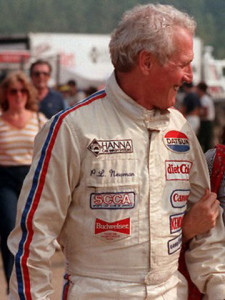 Of Mice and Men would to my knowledge have been Newman’s first artistic encounter with Steinbeck. But that day in 1987 at the racetrack in Monterey, when the conversation turned to literature, he acknowledged he was in Steinbeck country in classic Newman style. His blue eyes scanning the surrounding hills close by Steinbeck’s Pastures of Heaven, he said, “No wonder Steinbeck loved it here–sure is pretty.’’
Of Mice and Men would to my knowledge have been Newman’s first artistic encounter with Steinbeck. But that day in 1987 at the racetrack in Monterey, when the conversation turned to literature, he acknowledged he was in Steinbeck country in classic Newman style. His blue eyes scanning the surrounding hills close by Steinbeck’s Pastures of Heaven, he said, “No wonder Steinbeck loved it here–sure is pretty.’’
Paul Newman was famous for the way he could throw a line. But the one that will always haunt me is “Where ya’ gonna send the dime?’’
Another true story by Steve Hauk will appear next week, the 300th blog post published since SteinbeckNow.com launched three years ago. Meanwhile, here is a sample of Paul Newman’s “folksy Stage Manager” in the 2003 Westport Country Playhouse production of Our Town.–Ed.
Literary Heritage Festival Honors John Steinbeck, Irish-American
Like Ed Ricketts, the friend John Steinbeck mythicized in Cannery Row, Sam Hamilton—the Irish-American grandfather similarly mythologized in East of Eden—is increasingly recognized as a real-life pioneer independently of Steinbeck’s fiction. The father of Steinbeck’s imaginative mother Olive immigrated from Northern Ireland at the age of 17 and settled with his Irish-American wife in San Jose, California, before moving the family to the Salinas Valley, the semi-mythic setting for The Pastures of Heaven, The Long Valley, and most of East of Eden. Hamilton hailed from tiny Ballykelly in County Derry, a place so small that Steinbeck almost missed it when searching for his Irish roots after writing East of Eden. Now the people of Derry are celebrating their favorite grandson in a first-time literary heritage festival devoted to Steinbeck’s life and work. From October 7 to October 19 the Roe Valley Arts and Cultural Centre in Limavady will present “The Human Heart and the Land”—a festival title that fits the author of East of Eden to a tee. A high point for Irish-American fans is the October 13 talk on Derry influences in Steinbeck’s writing by historian Allister McReynolds, the author of Legacy: The Scots Irish in America. Sam Hamilton—the subject of an upcoming BBC segment on the contribution made to American culture by immigrants from Northern Ireland—would be proud.
Angling Days: My Love Affair With American Literature, John Steinbeck & Fly Fishing
A book on fly fishing by a scholar of American literature is great news for fans of John Steinbeck, especially when the scholar is Bob DeMott. The author of Angling Days: A Fly Fisher’s Journals talks about his lifelong love affair with John Steinbeck and fly fishing in this interview for Armstrong Television, serving Ohio, Kentucky, and West Virginia.—Ed.
